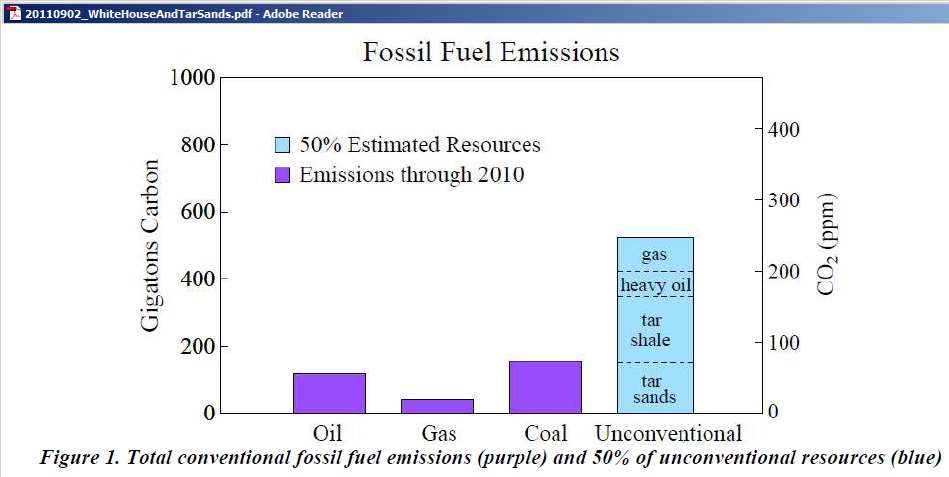(1) LNG exports
Total global CO2 emissions will be reduced by LNG exports from coal seam gas (CSG) only if there are binding intergovernmental agreements in place which force destination countries to leave an energy equivalent amount of coal in the ground, for good. This is because CO2 is a long lived gas 30 % of which stays in the atmosphere for more than 100 years.
http://unfccc.int/resource/brazil/tuning_carbon/bern_irf.gif
from this article:
http://unfccc.int/resource/brazil/carbon.html
It is NOT sufficient to argue that CO2 emissions from e.g. CCGT power plants in which LNG might be used are lower than those from coal fired power plants. The existing coal fired power plants in the destination countries must be REPLACED. If this is not done, CO2 concentrations in the atmosphere will just increase as CO2 from gas is added on top of that from coal. Australian LNG burnt in Japanese power plants replacing nuclear power will add to CO2 emissions 100%. It is not Australia’s national job to solve energy problems in other countries.
NASA climatologist James Hansen has calculated that on a global basis the production of 50% of non-conventional gas will increase CO2 concentration in the atmosphere by 50 ppm
http://www.columbia.edu/~jeh1/mailings/2011/20110902_WhiteHouseAndTarSands.pdf
(2) Coal seam gas for CCGT power plants in Australia
In its submission 337 to the coal seam gas inquiry of the NSW government
http://www.parliament.nsw.gov.au/Prod/parlment/committee.nsf/0/6B36605FB99839D1CA25790D0025C0E3
Santos writes on page 5:
“Gas fired power stations can replace higher carbon dioxide emitting coal fired power stations”
“can”, yes, but they don’t. On page 13 Santos writes:
“1,500 MW of new gas fired baseload generation has also been added to the NEM in the last ten years.”
Santos fails to submit a list of coal fired power plants which have been replaced. The same applies to the peaking generation plus renewable energies. Also on page 13:
“Since 2001, 4,300MW of gas fired peaking generation capacity has been added to the NEM. This trend of increasing renewable generation and complementary gas fired generation is expected to continue and increase as more intermittent renewable capacity is commissioned to meet the MRET targets.”
Even if Australian coal fired power plants were replaced, if the coal so saved is then exported, there is no reduction in CO2. In fact, there is no intention whatsoever of the Federal government to reduce coal production:
On 22/9/2011, the Climate Change Minister (!!!) proudly announced:
Mr COMBET (Charlton—Minister for Climate Change and Energy Efficiency) (15:03): …………..
But let’s look at the coal industry and the facts in relation to that as well. The allegation made is that the industry will be destroyed; the fact is jobs will grow. Investment is growing—$70 billion of investment—19 new mines are coming.
http://www.aph.gov.au/hansard/reps/dailys/dr220911.pdf
In other words, to sum it up, coal seam gas in the context of other policies (or lack thereof), will just prolong Australia’s fossil fuel addiction and INCREASE over-all emissions and the amount of CO2 remaining in the atmosphere.
(3) Coal seam gas replacing oil
CO2 emissions from burning crude oil will go down with declining oil production (provided unconventional oil is left in the ground). NASA climatologist James Hansen has assumed in his calculations that all oil will ultimately be burned and end up in the atmosphere as CO2 – no matter whether we increase fuel efficiency in vehicles or not. When replacing oil by gas as transport fuel CO2 emissions will at least not go up. But like with all other gas uses, priorities will have to be set when converting to gas as transport fuel:
(i) Emergency vehicles
(ii) Agricultural machinery and trucks transporting agricultural implements and bringing food to the cities
(iii) Locomotives and all machinery and trucks working on rail (but not highway) projects
(iv) Trucks and diesel operated machinery used in utility sector (water, sewer, power etc.) and the renewable energy sector in particular
(v) Trucks transporting other essential goods, materials and inputs for industry to work but not unnecessary consumer goods
…..list to be continued but the above gives an idea
The last priority would be to convert private cars to CNG.
The only sustainable land transport system is electric rail using renewable energies (solar thermal, geothermal, wind etc. – they all produce electricity, not fuels)
———-
Other articles on this web site on this topic:
13/10/2011
NSW gas as transport fuel. Where are the plans?
http://crudeoilpeak.info/nsw-gas-as-transport-fuel-where-are-the-plans
11/10/2011
Australia’s natural gas squandered in LNG exports
http://crudeoilpeak.info/australias-natural-gas-squandered-in-lng-exports
28/9/2011
Submission to NSW coal seam gas Inquiry
http://crudeoilpeak.info/wp-content/uploads/2011/02/Submission_NSW_CSG_Inquiry_Sep2011.pdf

